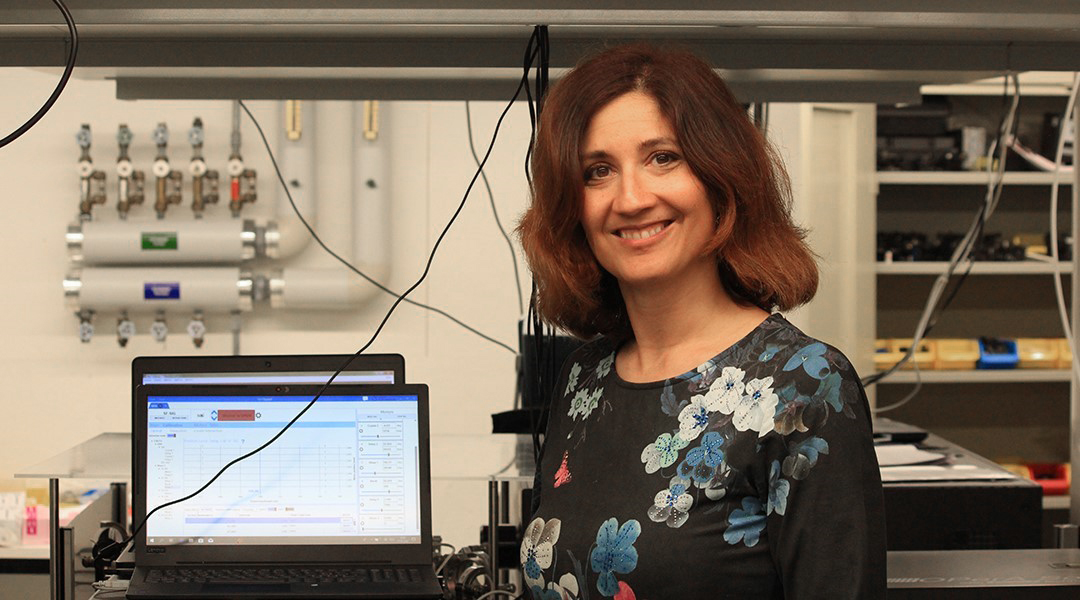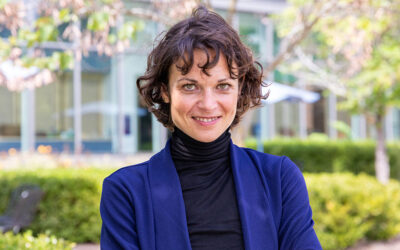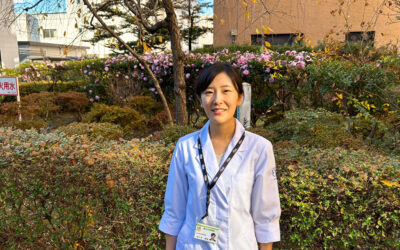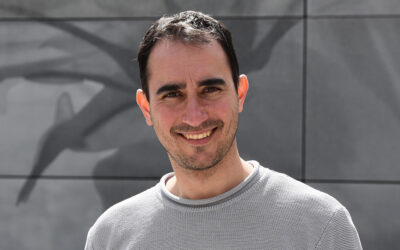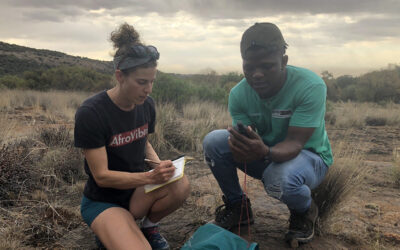Natalie Banerji’s success in the field of physical chemistry and her laser-focused passion for the science can be intimidating, but upon meeting her in person, you are immediately impressed by her positive energy and bubbly personality. She clearly loves what she does and is working hard to unlock the secrets of light and matter through the science of spectroscopy.
Banerji is professor at the University of Bern where she leads the FemtoMat research group. Her laboratory uses ultrafast spectroscopic techniques to study materials that will advance technologies such as organic light-emitting diode (OLED) screens and biosensors.
She and her team are particularly interested in developing new organic materials that possess the right electronic, optical, and mechanical properties to better conduct electricity while still being lightweight and cost effective. These materials, they hope, will be crucial to improving the performance of organic-based solar cells, as well as other forms of efficient renewable energy.
Banerji is excited about the future, and took the time to share with us some insights into her lab’s work, her philosophy on teaching, and how her love of animals and “home zoo” might have led to a career in the veterinary sciences if her love of chemistry hadn’t won out.
Tell us a bit about yourself. Where did you grow up? When did you decide to become a physical chemist?
I am Austrian. My mom is Austrian and my father is from India. They worked at an international organization in Geneva, Switzerland, and that is where I was born and grew up. I stayed in Geneva all the way to the end of my Ph.D.
My big dream when I was in high school was to become a veterinarian, which did not happen because I was traumatized at 16 when I worked for a veterinarian. Then I thought maybe the next closest thing is to become a biologist.
I really liked molecular biology and I was told that biochemistry is kind of similar but gives deeper insight. The first two years were mostly chemistry, so I got much more acquainted with chemistry, and I fell in love with it.
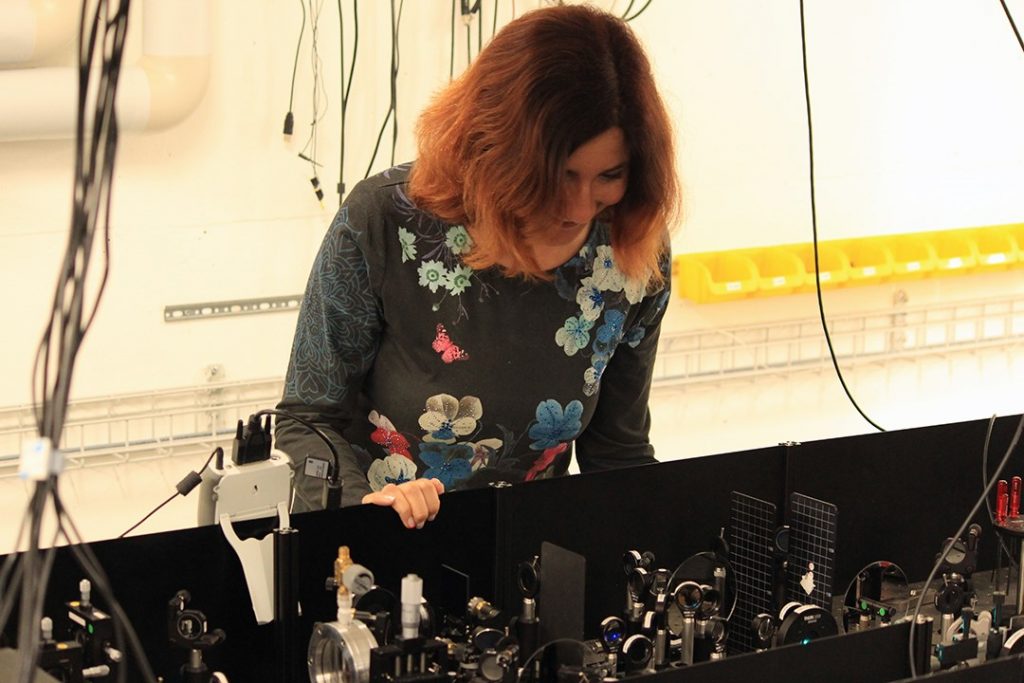
Who were your biggest supporters or mentors?
I was always very much pushed by my mom, who is a very ambitious person. She really wanted me to study and become an academic.
School teachers also had a big influence on me. I had a great biology teacher when I was doing my high school exams. I think he really convinced me to go into science, and that is also why I wanted to become a biologist. Once I started academics after my postdoc, I met a few great people in the research community.
Natalie Stingelin is a Swiss professor who is now at Georgia Tech, and is very social and active on the internet. She inspired me and introduced me to a lot of people. Carlos Silva is a spectroscopist in Montreal and Ursula Keller is at ETH Zurich. They are all more senior researchers in the field who are helping and inspire me. I think it is always very important to have mentors.
If physical chemistry hadn’t worked out, what would be your dream job?
Now that I am a little bit older and tougher, I would go back to being a veterinarian. I have had a lot of animals and I really like tending to them. These days, together with my boyfriend, we have three cats and an aquarium, and I used to have bunnies, turtles, and a parrot. I still feel that I would have very much liked to have interactions with animals and people but at that time, I was a little bit shocked because the veterinarian I worked with put a lot of animals down or conducted sterilizations, and there were always a lot of people crying.
What do you like most about teaching?
I like learning through teaching. When I understand something, I enjoy helping others understand it as well. This transmitting of knowledge and seeing that people understand what I am saying and get all the links between different aspects of the field so they can see the broader picture is very rewarding.
What advice would you give to aspiring chemists?
Be passionate. This is a job that is a lot of work, especially if you’re going into academia. You are going to spend much more than the usual working day on it and you are going to have many frustrations because it is a system where you are tested all the time. The chance of things going through is quite small. For me, it is more a hobby than a job, which makes it is easier to deal with the more negative side of it.
You are currently principal investigator at the FemtoMat Research Group. Can you tell us a bit about your laboratory’s work?
We are physical chemists who work on spectroscopy. We look at light-matter interactions in what I call “new generation semiconductors”. These semiconductors are optoelectronic materials so we can use them for optical and electronic applications, but they are not the traditional ones that you would use, like silicone, in a solar cell. They are new materials — for example organic materials — which have a few advantages such as being cheaper to make and are lightweight.
By looking at how they interact with light, we can learn about their optical properties and their conductivity, which is important for electronics. We can go into spectral ranges where low frequency electromagnetic radiation is interacting with those materials and moving the charges in them to learn about their conduction. This is how we investigate materials by spectroscopy.
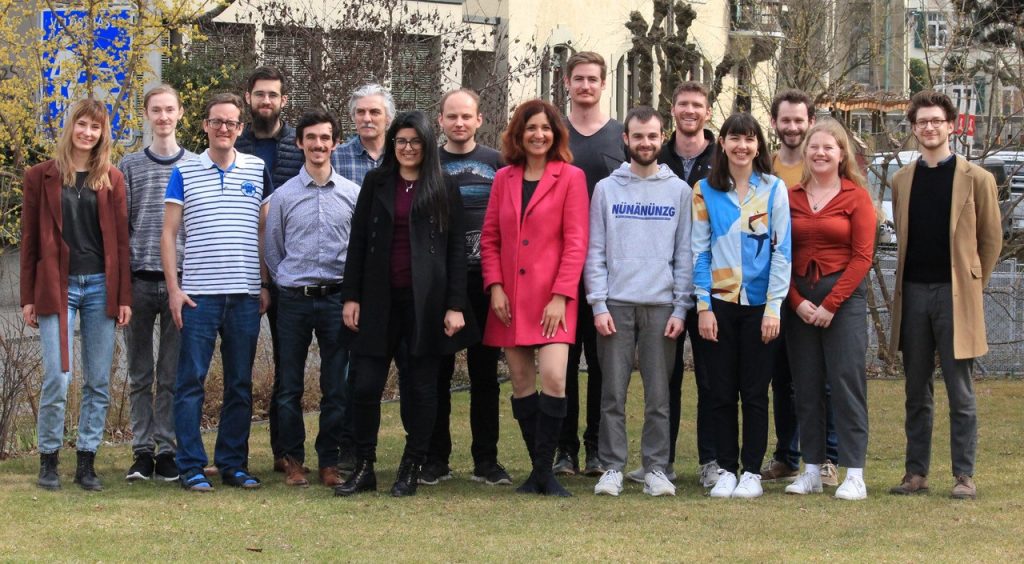
What are organic electronic materials?
These are one class of new generation semiconductors that we study. This is my favorite class because they are organic materials made of carbon, hydrogen, nitrogen, and oxygen atoms. Mechanically they are like plastics because they are the same broad type of material, being flexible and very thin. However, plastics do not conduct any electricity so you cannot make a transistor or an LED out of them. But these are synthesized in a way that they still conduct electricity. You can combine the electronic and optical properties of something like silicone with the mechanical properties of something like plastic, and then you can make new devices.
What application do they have and why are you investigating them?
The biggest application is the oldest one: solar cells. You can make organic solar cells out of those [previously mentioned] materials, and they are now starting to hit the market because you can make them so flexible.
Then there are OLED screens on your phone screen or television, which can also be made of these materials. When you inject current in there, light comes out and you can have different colors and make a screen. You can also make transistors, which are everywhere in electronics.
The newest thing is bioelectronics, where you interface biology with, for example, electrodes. If they are made of metal or silicon, our biology tends to reject them. If you make electrodes with organic materials, they are much closer to the molecules we have in the body.
There are many biologists who have started using devices made of organic semiconductors, but it is not so well understood why they work, and they are not working as efficiently as the inorganic materials. The conductivity is lower and the light absorption and the light conversion to charges is lower. We study the very fundamental processes in those materials so that we can understand why they are not so efficient and can make this deficiency better.
In Sweden, they have devices in the brain that release medication against epileptic seizures when it is needed. They measure the current in the brain and somehow know there is a seizure, and then emit something subcutaneously. I heard in the army they are interested in sweat sensors, where something very thin and flexible sticks on the skin. One can even implant an artificial retina behind the eye to restore light sensitivity.
You collaborate with many researchers around the world. How vital are these collaborations for your work and how do you cultivate them?
In my field, it is especially vital because this is a very multidisciplinary field. You do not go very far by yourself. You need a synthetic chemist to make the materials, and a materials scientist who processes the films, and maybe a physicist who studies the devices, and an engineer who makes them, and then a biologist to study their application.
I bring one piece of the puzzle, which is to understand the fundamental properties, but there are many pieces. I think this is one of the most collaborative fields I have ever seen.
We cultivate this in conferences. I went to more than the average amount of conferences before the pandemic, and I think that helped me a lot in my career. The organic electronics community in Switzerland is not very developed, so I really need to look globally for collaborators. Now that there is a pandemic, I am always online and on Zoom calls, but it is starting to become a problem. I am really looking forward to traveling again because if you go to a conference, then afterwards you go out to dinner and you talk about your science and it is a more informal setting. That is when the best ideas pop up.
What are your group’s future research plans and why?
I think we are already in a transition because we used to do mainly organic solar cells and now we are really going into the bioelectronics field. We have developed a lot of methodology to understand how those organic semiconductors behave when they are, for example, in water or in electrolytes. Now we must go further and see what happens when they are in contact with real cells and real biology.
This is moving very far away from my comfort zone, but this is something we are interested in. We are also enhancing the properties of those materials by doping them and mixing them with other materials to enhance the conductivity and understand how this is enhanced so they become more efficient.
What is …
Your favorite hobby?
Besides taking care of my zoo at home, I really like outdoor activities, such as skiing and hiking, and Switzerland is a very nice place for that. I also like to cook.
Your favorite travel destination?
I really like being on a tropical beach and going snorkeling and swimming, and to enjoy beautiful landscapes. Mexico is particularly nice with the coastline, culture, and food.
Your favorite dish?
I really like seafood, but I feel guilty because I have an aquarium at home. I did a postdoc in California and the seafood there was excellent. They have things like cioppino soup, a tomato-based soup full of seafood, that I even make myself.
A book you can recommend?
Crime books are my favorite. There is a series of books by Louise Penny, a Canadian author, where the main character is always the same inspector called Inspector Gamache. He solves crimes in Francophone Canada, and they have a good suspense, but they are also very human and psychological because this inspector cares a lot about his team. He has a very special way of dealing with people and tolerating the way people are.
Who would play you in a biopic?
Jennifer Lawrence would be pretty cool. She is blonde and she does not look like me at all, but I think she would be a good fit for personality.
A discovery (any research field or time) you wish you would have made?
There are some medications that really changed the world, like antibiotics or the contraceptive pill. I would have liked to make those discoveries because they really had a huge impact on people and healthcare.
A person (famous or not) you would like to meet?
Steve Jobs, not because he was a successful businessman but because the concept and the design of his products and the need for perfection is fascinating. I also really like Pixar movies. The graphical design of scenes behind Pixar movies are very fascinating because, in chemistry, we use similar algorithms now to simulate complex molecules. I find him a very inspiring person because he went so far.
Learn more about Banerji’s work in the Advanced Materials “Women in Materials Science” Virtual Issue — a collection of outstanding work created, steered, and led by female scientists around the world.

